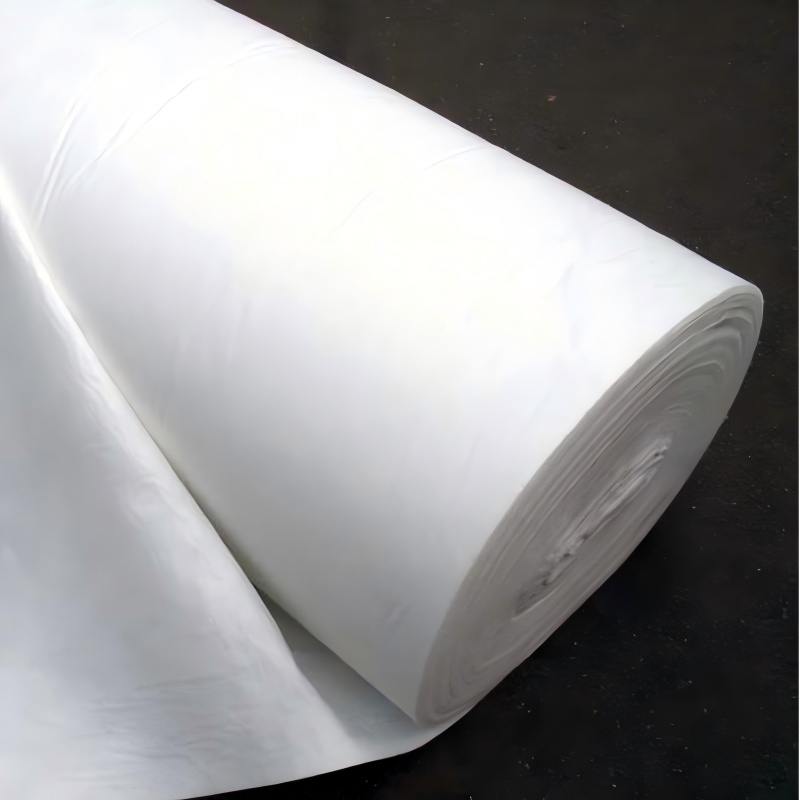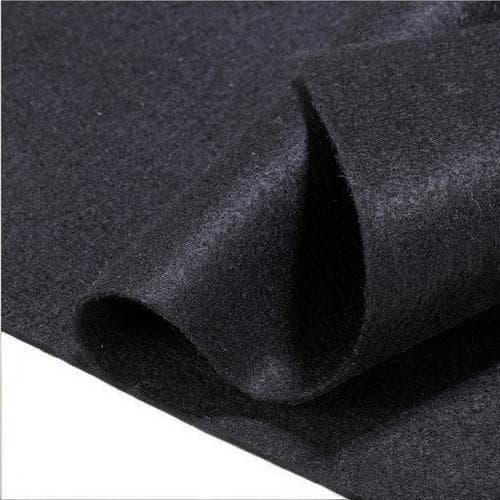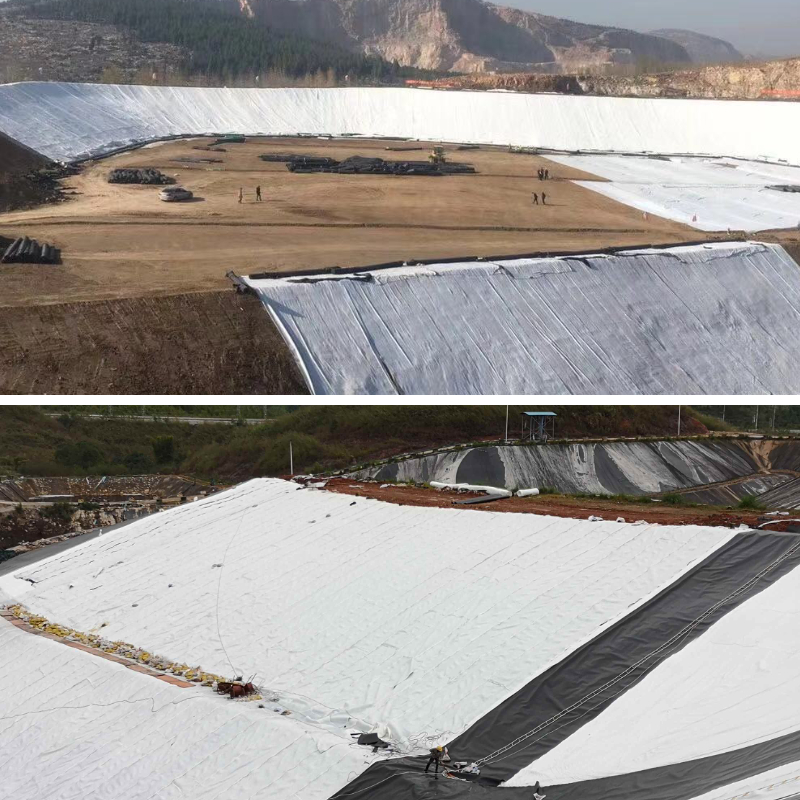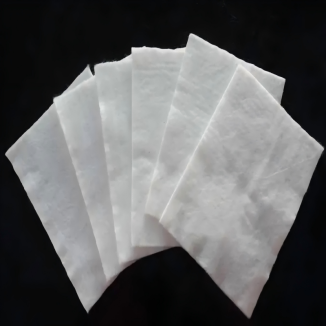Orange Geotextile
1.Visual Warning & Clear Boundaries: Orange is highly visible, making it easy to mark the laying range, warn personnel and machinery to avoid the area, and reduce misoperations and material damage.
2.Weather Resistance & Longer Lifespan: Contains UV-resistant components, offering better outdoor aging resistance; its service life is 20%-30% longer than that of ordinary geotextiles.
3.Uncompromised Functions & Easy Construction: Retains core functions like filtration and drainage, while using color to distinguish functional areas, simplifying construction and subsequent maintenance.
4.Scenario Adaptability & Easy Management: Facilitates monitoring of laying integrity in ecological scenarios, enables easy later demolition and recycling in temporary projects, and offers flexible adaptability.
Product Introduction
I. Basic Properties
Orange Geotextile are made from synthetic fibers such as polypropylene and polyester through processes like weaving and needle-punching. Their key difference lies in the use of special orange dyes containing UV-resistant components, which ensure long-lasting color without fading. In terms of basic physical properties, they are consistent with industrial geotextiles: the conventional grammage ranges from 100 to 800g/㎡, and the tensile strength is 10 to 50kN/m. They also have a certain porosity and chemical stability. Meanwhile, their orange appearance offers high visual penetration in outdoor environments, meeting the identification needs of various scenarios.
II. Core Functions
Basic Geotextile Functions: It retains the core roles of filtration, drainage, and isolation—capable of trapping soil particles, diverting accumulated water, and separating different material layers, thus meeting the needs of basic engineering projects such as subgrade protection and slope reinforcement;
Visual Identification Function: The high visibility of orange allows clear marking of laying boundaries and differentiation of functional areas (e.g., drainage layers, temporary protection layers). It also warns personnel and machinery to keep clear, reducing construction misoperations;
Environment Adaptation Function: Supported by UV-resistant dyes, it has stronger resistance to aging and sun exposure outdoors, enabling stable performance in open-air projects such as mine reclamation and river regulation.
III. Main Characteristics
High Recognizability: Orange has strong visual impact in outdoor environments, facilitating quick positioning of the laying range. It also contrasts with green plants in ecological scenarios, aiding in monitoring the completeness of laying;
Excellent Weather Resistance: The special dyes contain UV-resistant components, so its outdoor service life is 20%-30% longer than that of ordinary geotextiles. It is not prone to fading or cracking due to sun exposure or moisture;
Flexible Scenario Adaptation: It is suitable for both long-term projects (e.g., subgrade protection) and temporary projects (e.g., temporary drainage in road construction). It is easy to identify during later demolition and recycling;
Convenient Management: By using color to distinguish functional areas, it simplifies construction deployment and subsequent maintenance, reducing engineering management costs.
Product Parameters
project | metric | ||||||||||
Nominal strength/(kN/m) | |||||||||||
6 | 9 | 12 | 18 | 24 | 30 | 36 | 48 | 54 | |||
1 | Longitudinal and transverse tensile strength / (kN/m) ≥ | 6 | 9 | 12 | 18 | 24 | 30 | 36 | 48 | 54 | |
2 | Maximum elongation at maximum load in longitudinal and transverse directions/% | 30~80 | |||||||||
3 | CBR top penetration strength /kN ≥ | 0.9 | 1.6 | 1.9 | 2.9 | 3.9 | 5.3 | 6.4 | 7.9 | 8.5 | |
4 | Longitudinal and transverse tearing strength /kN | 0.15 | 0.22 | 0.29 | 0.43 | 0.57 | 0.71 | 0.83 | 1.1 | 1.25 | |
5 | Equivalent aperture O.90(O95)/mm | 0.05~0.30 | |||||||||
6 | Vertical permeability coefficient/(cm/s) | K× (10-¹~10-), where K=1.0~9.9 | |||||||||
7 | Width deviation rate /% ≥ | -0.5 | |||||||||
8 | Unit area mass deviation rate /% ≥ | -5 | |||||||||
9 | Thickness deviation rate /% ≥ | -10 | |||||||||
10 | Thickness coefficient of variation (CV)/% ≤ | 10 | |||||||||
11 | Dynamic perforation | Puncture hole diameter/mm ≤ | 37 | 33 | 27 | 20 | 17 | 14 | 11 | 9 | 7 |
12 | Longitudinal and transverse fracture strength (grab method)/kN ≥ | 0.3 | 0.5 | 0.7 | 1.1 | 1.4 | 1.9 | 2.4 | 3 | 3.5 | |
13 | Ultraviolet resistance (Xenon arc lamp method) | Longitudinal and transverse strength retention rate% ≥ | 70 | ||||||||
14 | Ultraviolet resistance (fluorescence UV lamp method) | Longitudinal and transverse strength retention rate% ≥ | 80 | ||||||||
Product Application
1.Temporary Protection in Road Construction: Mostly used as liners for temporary drainage ditches, temporary subgrade coverings, or isolation for construction area boundaries. The high visibility of orange can remind passing vehicles and pedestrians to avoid the temporary construction area, reducing the risk of accidental intrusion. At the same time, it can filter rainwater impurities, divert accumulated water, and protect the subgrade from scouring. After construction, its recognizable color also facilitates quick demolition and recycling.
2.Outdoor Slope and River Regulation: Laid on the surface of highway/railway slopes and riverbank slopes, it has the basic functions of reinforcing slopes (isolating soil and protective layers) and diverting seepage water on the slope surface. The clear visibility of orange in open-air environments makes it easy for staff to conduct daily inspections, quickly detect laying damage or displacement, and perform timely maintenance—making it particularly suitable for long-term open-air slope protection scenarios.
3.Ecological Restoration Projects: In projects such as mine reclamation and degraded grassland restoration, it serves as a transitional protective layer before vegetation planting. The contrast between orange and surrounding green plants makes it easy to monitor whether the laying range is complete and free of missing areas. Meanwhile, it can trap sediment and maintain soil moisture to create conditions for vegetation growth. Additionally, the UV-resistant orange material can serve for a long time outdoors, adapting to the cycle requirements of ecological restoration.
4.Municipal and Construction Foundation Pits: Applied in temporary diversion layers of municipal drainage pipelines and temporary anti-seepage layers for construction foundation pit slopes. Orange allows quick differentiation of functional areas (e.g., orange for drainage layers and other colors for anti-seepage layers), simplifying inter-layer positioning during construction. At the same time, laying it around foundation pits can warn construction machinery to avoid colliding with the slope protective layer, reducing potential construction safety hazards.
In summary, the application of orange geotextiles revolves around "color characteristics + basic functions". It not only retains core functions such as filtration, drainage, and isolation but also leverages the high recognizability of orange to achieve safety warning, simplified management, convenient maintenance, and recycling in different scenarios. Whether for temporary construction protection or long-term outdoor projects, it can adapt to needs and improve project safety and operational efficiency.












